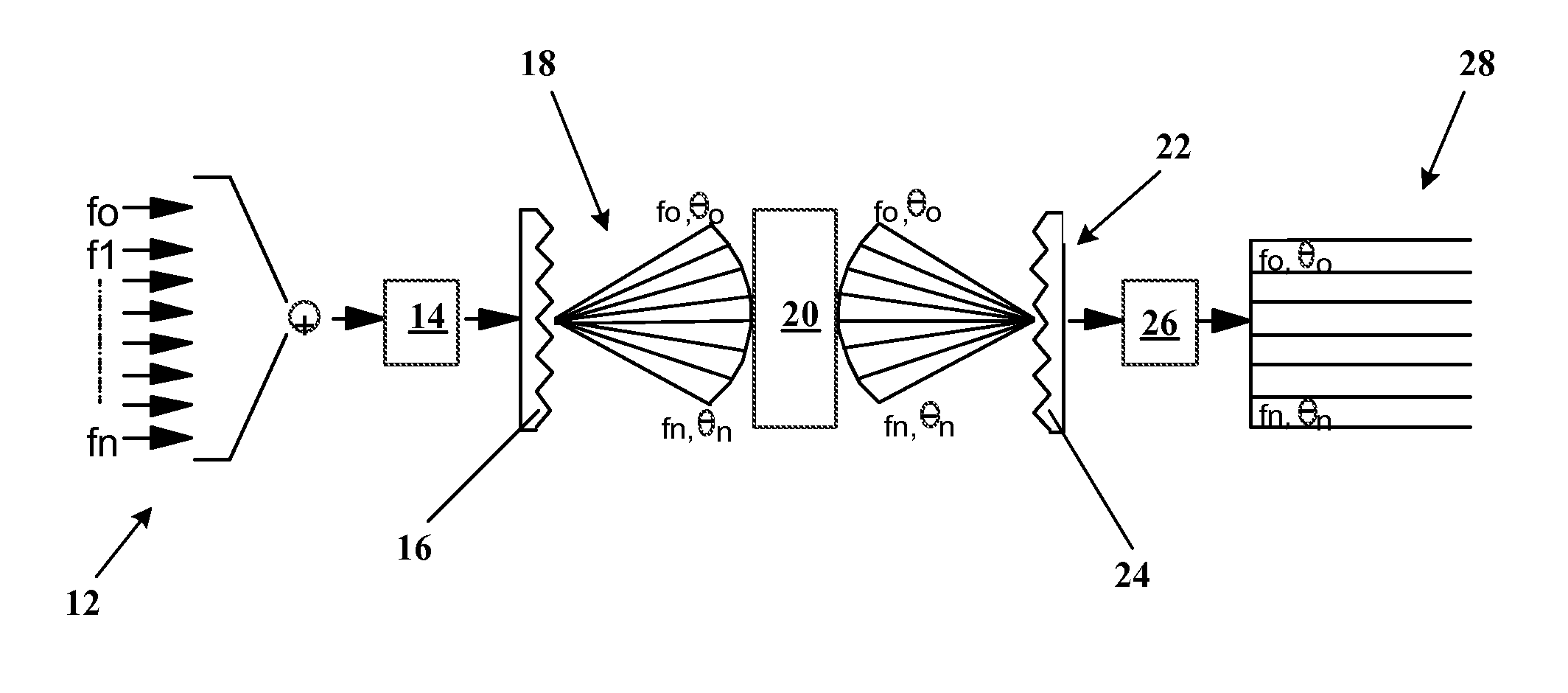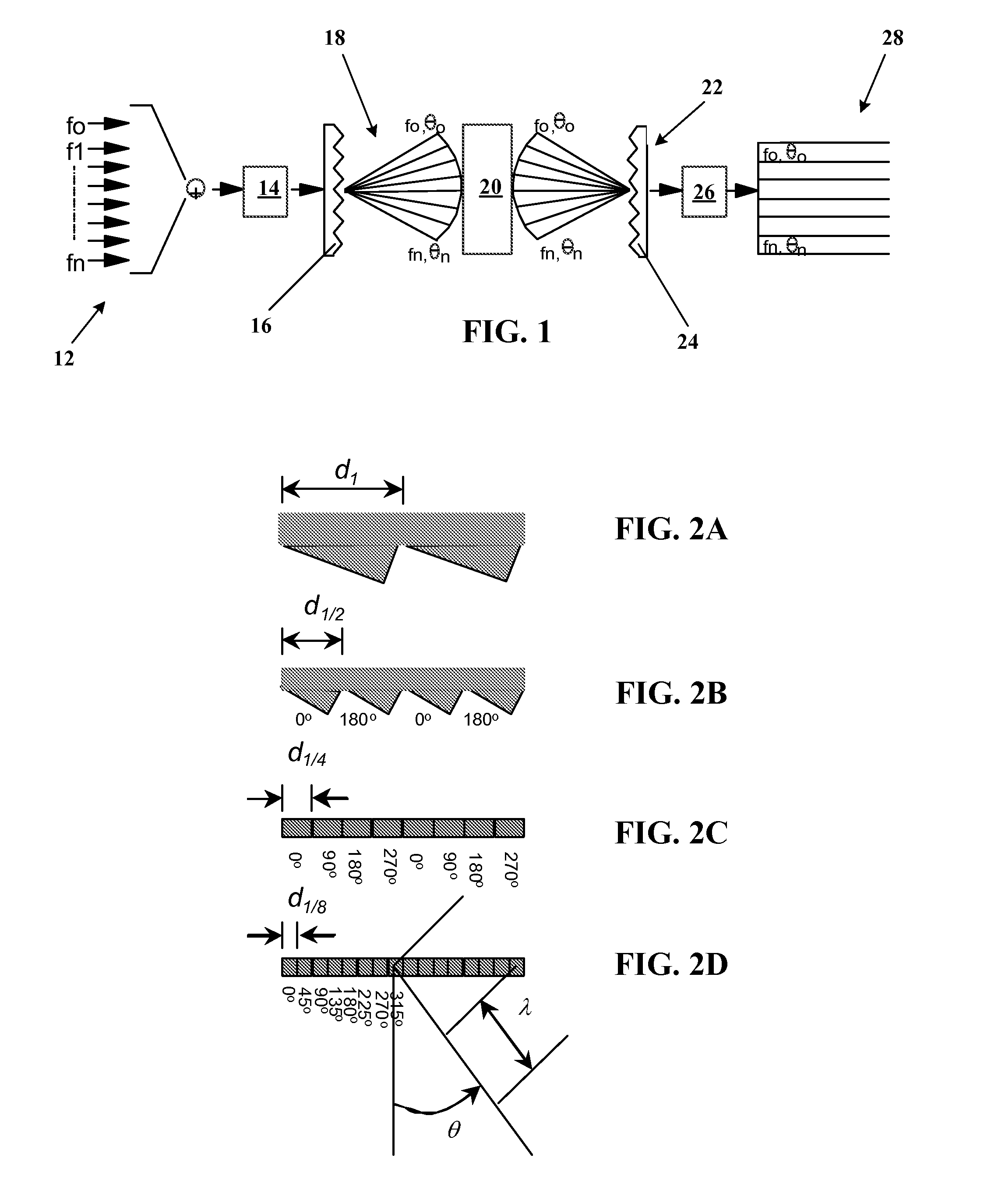SYSTEMS AND METHODS IMPLEMENTING FREQUENCY-STEERED ACOUSTIC ARRAYS FOR 2D and 3D IMAGING
a frequency-steered acoustic array and imaging system technology, applied in the direction of ultrasonic/sonic/infrasonic wave beacon systems, direction finders, instruments, etc., can solve the problems of high frame rate, high frame rate, and low imaging scene stability, and achieve the effect of increasing image quality
- Summary
- Abstract
- Description
- Claims
- Application Information
AI Technical Summary
Benefits of technology
Problems solved by technology
Method used
Image
Examples
Embodiment Construction
[0050]Frequency-steered acoustic array systems and methods of the present invention utilize a broadband acoustic pulse as an input signal to one or more frequency-steered arrays that may have periodic or aperiodic spacing or phasing of transducer elements that may be blazed and / or phase shifted, that may be provided in a single order or a multiple order configuration, and that may be operated in a transmit and / or receive mode. Multiple frequency-steered acoustic array systems may be arranged in an X- or T-configuration to provide desired fields of view, and selected array configurations may be used in linear and / or rotational mechanical scanning modes to produce a variety of 2D and 3D data sets that may be processed to produce 2D and 3D images.
[0051]The input pulse to a frequency-steered acoustic array operated in a transmit mode is preferably a broadband pulse such as an FM pulse, a scale-swept wavelet pulse train, a multi-wavelet or multi-frequency pulse, or another broadband puls...
PUM
 Login to View More
Login to View More Abstract
Description
Claims
Application Information
 Login to View More
Login to View More - R&D
- Intellectual Property
- Life Sciences
- Materials
- Tech Scout
- Unparalleled Data Quality
- Higher Quality Content
- 60% Fewer Hallucinations
Browse by: Latest US Patents, China's latest patents, Technical Efficacy Thesaurus, Application Domain, Technology Topic, Popular Technical Reports.
© 2025 PatSnap. All rights reserved.Legal|Privacy policy|Modern Slavery Act Transparency Statement|Sitemap|About US| Contact US: help@patsnap.com



